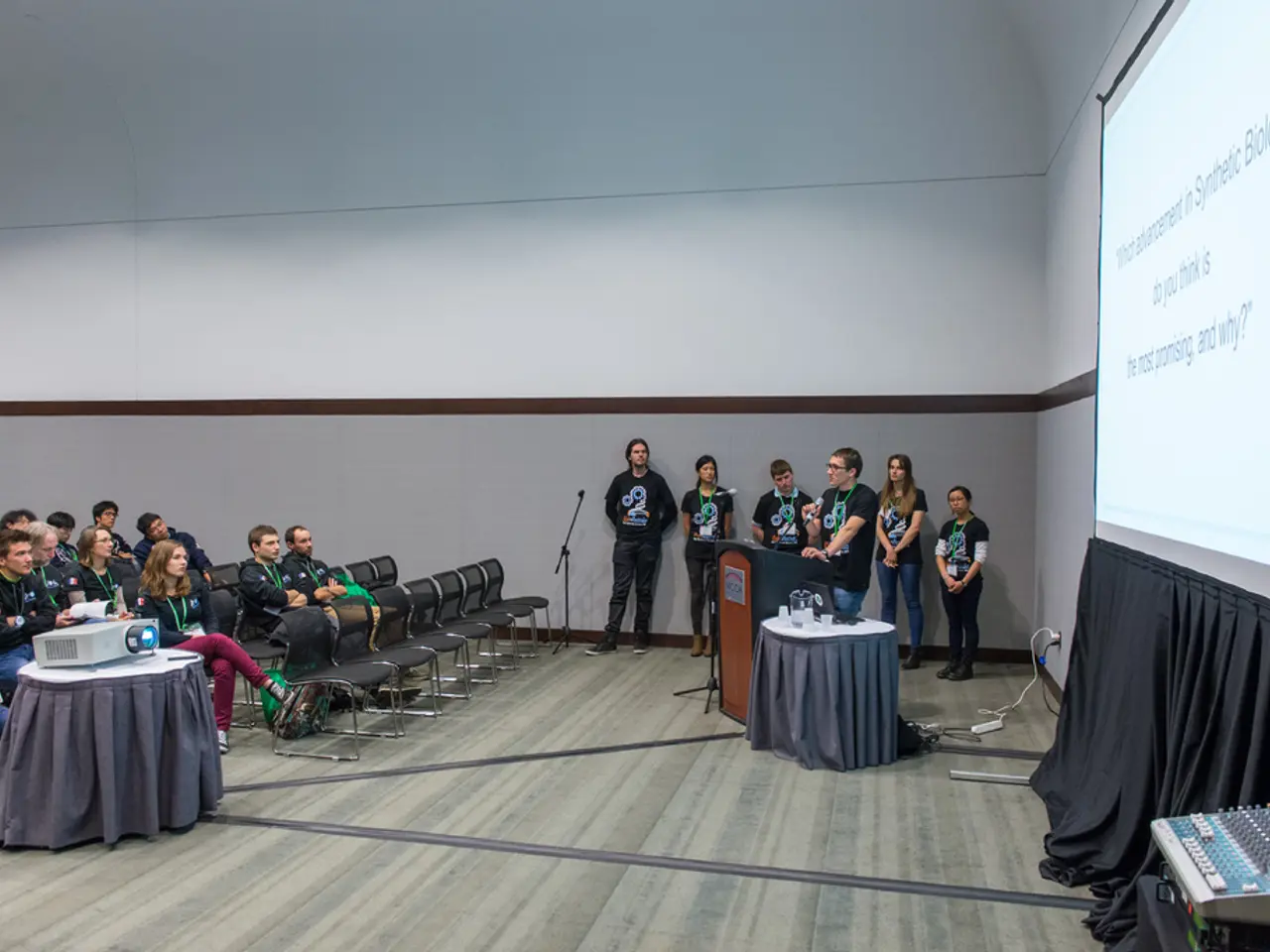Striking Statistics Indicate Further Efforts Needed in Hybrid Development
In today's corporate world, hybrid work is no longer a fleeting trend. Companies are increasingly adopting flexible, personalized hybrid policies to cater to the needs of their diverse workforce [1][4]. This shift towards a more flexible work environment is particularly welcomed by younger employees who value the balance between remote autonomy and meaningful in-person interactions [3].
As hybrid work becomes the new norm, the focus has shifted towards enhancing communication within these distributed workforces. Organizations are turning to video and audio platforms that facilitate real-time interaction, transparent communication, and a sense of presence, regardless of location [5]. These platforms are being integrated with mobile-first employee engagement platforms, offering continuous feedback, recognition, and performance management.
The importance of user-friendly, accessible, and diverse tools cannot be overstated. Gen Z employees, as digital natives, prefer seamless, easy-to-use video and audio tools that require minimal training [2]. Industry leaders are working tirelessly to ensure these tools meet the needs of all employees, including those with caregiving responsibilities, disabilities, and diverse gender identities.
Inclusion and collaboration are key aspects of successful hybrid work strategies. By using video and audio technologies, companies aim to build connections, reduce remote isolation, and facilitate teamwork, creativity, and relationship-building that can be challenging in a remote setting [1][5]. This includes avoiding communication silos and ensuring consistent messaging across hybrid and frontline teams.
The role of video and audio communications extends beyond fostering connections. These technologies are embedded in platforms that support outcome-driven performance and accountability, shifting the focus away from hours logged towards measurable results. This approach can increase engagement and productivity [4][5].
Industry leaders such as Yannic Laleeuwe, marketing director of Meeting Experience at Barco ClickShare, have emphasized the importance of video technology in bringing inclusivity and equity to the meeting room. Shure, in their research findings released in September 2023, highlighted that organizations are not adequately equipped with the tools needed for effective communication in hybrid meeting environments [6]. The right in-ceiling speakers, according to Shure's product manager Nalle Magnusson, can bring everyone closer to meeting equity, whether in the office or remote [7].
The importance of robust communication systems, especially in workplaces with a mix of remote and in-person work, was emphasized at the 2024 AV/IT Summit. Nathan Coutinho, head of analyst relations and business strategy at Logitech, discussed the innovation in the videoconferencing product experience, offering a variety of sizes, pricing, and sustainable options [8].
A study from Vizrt in 2024 focused on the video communications side of the hybrid equation. The study found that low employee engagement may have reduced global GDP by 9%, underscoring the importance of investing in communication technologies [9]. Furthermore, 67% of respondents agreed that video communications technologies in town halls are more effective than other methods at helping them feel more aligned with the company's vision and understanding business updates [10].
Cindy Davis from AV Technology spoke with 30 industry thought leaders to find out the current state of hybrid work. Davis's findings suggest that while the hybrid workplace is here to stay, we are not yet fully comfortable making employees comfortable all the time. However, with the continuous advancements in communication technologies and strategies, we are getting closer to achieving successful hybrid work [11].
In conclusion, modern employee engagement in hybrid environments leverages flexible hybrid policies supported by advanced, accessible video and audio communication technologies embedded in integrated engagement platforms. These innovations enhance connectedness, inclusivity, and meaningful collaboration, which are essential for sustaining engagement in distributed workforces in 2025 and beyond.
- To increase productivity and engagement in a hybrid work environment, companies are investing in innovative video and audio platforms that offer real-time interaction, transparent communication, and user-friendly features for a diverse workforce.
- The adoption of these technologies is crucial for building connections, reducing remote isolation, and fostering collaboration among employees, contributing to a more inclusive and equitable workplace.
- In order to meet the needs of all employees, including those with various responsibilities and digital preferences, industry leaders are ensuring these technologies are accessible, diverse, and easy to use, while also focusing on finance and accountability through outcome-driven performance.




